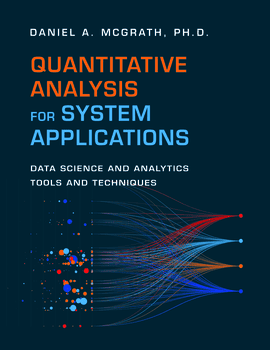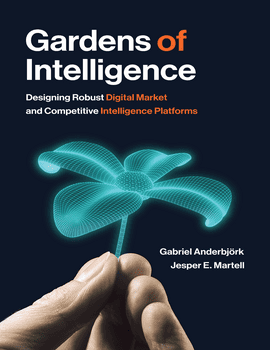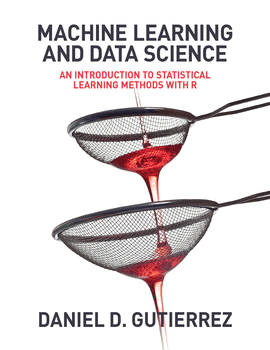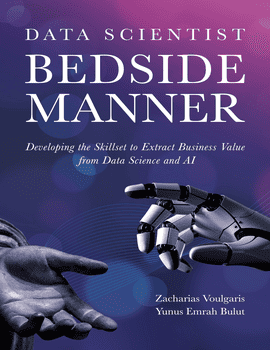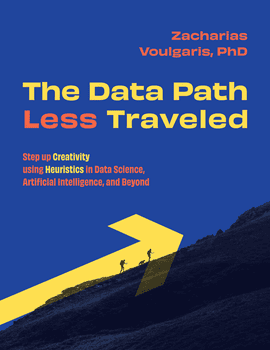Quantitative Analysis for System Applications
Quantitative Analysis for System Applications: Data Science and Analytics Tools and Techniques, by Daniel A. McGrath
As data holdings get bigger and questions get harder, data scientists and analysts must focus on the systems, the tools and techniques, and the disciplined process to get the correct answer, quickly! Whether you work within industry or government, this book will provide you with a foundation to successfully and confidently process large amounts of quantitative data.
Topics
CHAPTER 1: What Does Quantitative Analysis of a System Really Mean?
What is a system?
What are data?
Fundamental system characteristics: open and closed systems
Other system characteristics
How to analyze real systems
How to analyze IT systems
CHAPTER 2: Analytic Approaches for Big Data
Analytics and big data defined
Data-centric approaches
10 T’s for Data Mining
Case Study: Mining of data.gov holdings for US international air travel
CHAPTER 3: Foundations of Data Management
Virtual systems fundamentals
Data audits – A rapid prototyping approach for small operations
CHAPTER 4: Data Quality – How Do You Know Your Numbers Are Good?
Data quality dimensions
The science part of data science
How do I know my results are good?
Measuring performance
Checklists
Daily management
CHAPTER 5: Characteristics of Data from Systems
Types of data
First principles
Generic outputs
Behavior over time
CHAPTER 6: Fundamental Quantitative Analysis for Systems
Exploratory data analysis
Descriptive statistics
Inferential statistics
Ishikawa’s seven tools
Big data tools and approaches
CHAPTER 7: Models and Prediction
Analog and digital simulation approaches
Building the model
What will the future work environment look like?
System dynamics models
Business models
CHAPTER 8: Human Aspects
Individuals
Health and safety
Elicitation
Decision making under risk
CHAPTER 9: Newest Developments
What’s next in technology?
What will the future bring?
Internet of Everything
Models as Artificial Intelligence
Organizational challenges
Data Analytics Support Office (DASO)
APPENDIX A: Detailed Description of the 10 T’s for Data Mining
APPENDIX B: Million Row Data Audit (MRDA) Process
APPENDIX C: Analysis of Rainfall Data for Amarillo, Texas (1880-2017)
APPENDIX D: Use of Simulation Models for Evaluating Traffic Flow
APPENDIX E: Application of DOE to Simulation Model Final Stretch
Here are just a dozen of the many questions answered within these pages:
- What does quantitative analysis of a system really mean?
- What is a system?
- What are big data and analytics?
- How do you know your numbers are good?
- What will the future data science environment look like?
- How do you determine data provenance?
- How do you gather and process information, and then organize, store, and synthesize it?
- How does an organization implement data analytics?
- Do you really need to think like a Chief Information Officer?
- What is the best way to protect data?
- What makes a good dashboard?
- What is the relationship between eating ice cream and getting attacked by a shark?
The nine chapters in this book are arranged in three parts that address systems concepts in general, tools and techniques, and future trend topics. Systems concepts include contrasting open and closed systems, performing data mining and big data analysis, and gauging data quality. Tools and techniques include analyzing both continuous and discrete data, applying probability basics, and practicing quantitative analysis such as descriptive and inferential statistics. Future trends include leveraging the Internet of Everything, modeling Artificial Intelligence, and establishing a Data Analytics Support Office (DASO).
Many examples are included that were generated using common software, such as Excel, Minitab, Tableau, SAS, and Crystal Ball. While words are good, examples can sometimes be a better teaching tool. For each example included, data files can be found on the companion website. Many of the data sets are tied to the global economy because they use data from shipping ports, air freight hubs, largest cities, and soccer teams. The appendices contain more detailed analysis including the 10 T’s for Data Mining, Million Row Data Audit (MRDA) Processes, Analysis of Rainfall, and Simulation Models for Evaluating Traffic Flow.
About Dan
Daniel A. McGrath, Ph.D., is the President of Llano Estacado Management Science Co. He has over 35 years of experience analyzing big data sets with many quantitative and statistical tools and software packages. He has a diversity of degrees: BA in Geography and Geosciences, MS in Soil Science, PhD in Systems and Engineering Management with all being from Texas Tech. He has worked extensively in environmental, project management, continuous improvement, business intelligence, and financial job functions. In addition, he has been a Project Management Professional and a Six Sigma Master Black Belt. He lives in Texas and travels widely, helping customers find their lost cities of gold!
Faculty may request complimentary digital desk copies
Please complete all fields.
